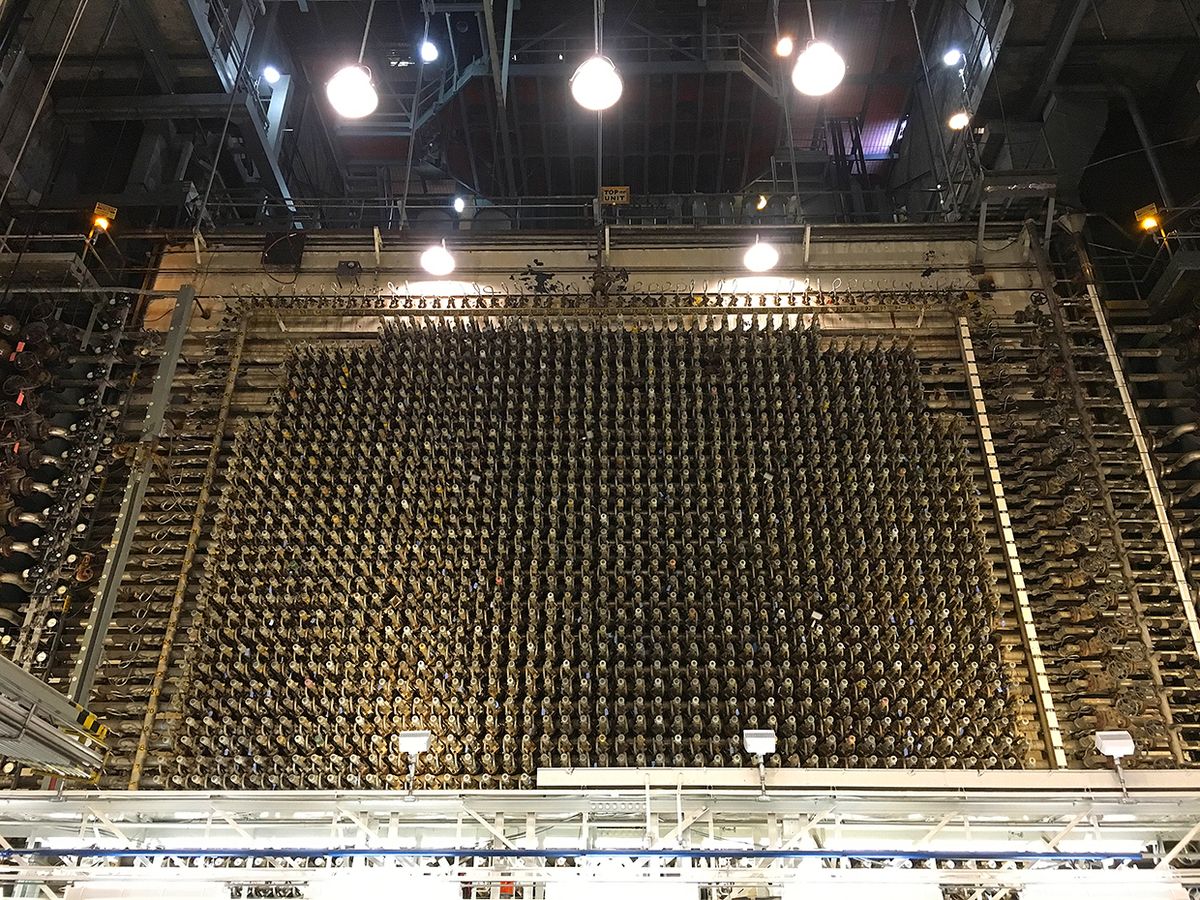A literal pile of cylinders rises 11 meters high inside a graphite box, filling the dimensions of a cavernous hall. The towering grid of over 2,000 tubes is a jaw-dropping, neck-twisting display. Yet size and symmetry aren't all that make this a humbling sight. This is the core of a nuclear reactor, one that produced the plutonium for the Trinity atomic bomb test—and for “Fat Man," the bomb that razed Nagasaki, Japan, in 1945.
The B Reactor sits on a remote corner of the Hanford Site, a sprawling expanse in southern Washington state. Completed on 13 September 1944 after 11 months of construction, the reactor belonged to the secretive Manhattan Project, the United States–led initiative to develop nuclear weapons during World War II. Even Hanford workers were kept in the dark, learning only that their labor would support “the war effort" and yield an unnamed “product."
Today the public can visit the reactor, at least some of the time. The U.S. Department of Energy and the National Park Service offer free tours from April to November, allowing visitors to roam the halls of the world's first large-scale plutonium production complex, which shuttered operations in 1968. While the Hanford site grew to include nine reactors, only the B Reactor remains çaccessible—thanks largely to the former workers who fought to preserve it. Now it's part of the Manhattan Project National Historical Park, which includes sites in Los Alamos, N.M., and Oak Ridge, Tenn.
I took the tour, traveling 45 minutes by bus from the visitor's center in Richland, Wash., through the arid landscape, past puffs of sagebrush and bright green potato plants. Rattlesnake Mountain looms above and the Columbia River courses by, replenishing the crops as it once cooled the nuclear reactors. A passenger asks how much radioactive contamination we'll be exposed to at the site, to which the guide replies, “None."
The museum tour starts with the showstopper: the reactor core. The 2,004 aluminum tubes stretch back about 13 meters, though we can see only their front ends. During production, physicists took 22-centimeter-long slugs of naturally occurring uranium and slid them into the horizontal tubes. Surrounded by graphite, the uranium was transformed by nuclear fission into plutonium. Treated river water pumped through the reactor at a rate of 280,000 liters per minute.
To the side, in a narrow control room, thousands of tiny knobs cover the wall like red, black, and green polka dots. The mechanical gauges monitored water pressure inside each of the tubes. Engineers often worried that bumping a gauge would throw off the readings and cause an emergency "scram," or the rapid insertion of 29 vertical safety rods to shut down the reactor. (It never happened.) Opposite the reactor, a gaping pit of metal pipes and manual valves shows how cooling water snaked into the pile.
Hundreds of original artifacts are sprinkled throughout the building. Rubber masks and thick gloves sit in a former decontamination room. Rotary phones and typewriters adorn wooden desks. Walls are covered in long-outdated calendars and hand-painted warning signs. It is a shrine to World War II–era ingenuity.
Yet the B Reactor tour doesn't dwell on the consequences of the Manhattan project. Visitors hear little of how, when the United States bombed Hiroshima and Nagasaki in August 1945, hundreds of thousands of people died from direct impact and the lingering effects of radioactive fallout. And the contaminated soil, groundwater, and leaking tanks of waste just south of the reactor are framed as necessary by-products of national security.
Robert Franklin, president of the B Reactor Museum Association, acknowledges that the site is "a real Pandora's box of history." He says the tour does encourage visitors to engage in complex and difficult discussions about U.S. nuclear history.
"On the one hand, it's a marvel of science and engineering," he says of the B Reactor. "But on the other hand, it helped to create this world of uncertainty, fear, and anxiety."
This article appears in the September 2019 print issue as "A-Bomb Tourism."





